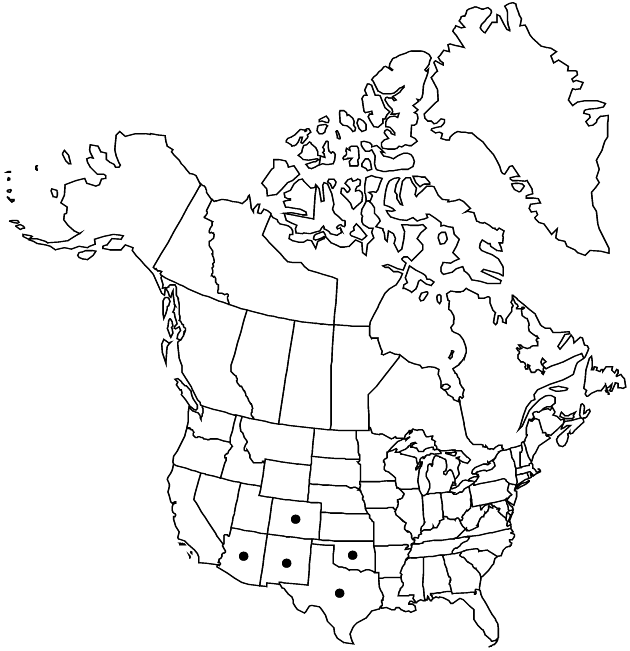Bidens bigelovii
in W. H. Emory, Rep. U.S. Mex. Bound. 2(1): 91. 1859.
Annuals, (10–) 20–80+ cm. Leaves: petioles 5–25 mm; blades rounded-deltate overall, 25–90+ × 15–35+ mm, (1–) 2 (–3) -pinnatisect, ultimate lobes lance-rhombic or ovate to lanceolate, 15–30 (–50+) × 5–15 (–30+) mm, bases truncate to cuneate, ultimate margins entire or ± serrate to incised, usually ciliolate, apices obtuse to acuminate, faces glabrous. Heads usually borne singly, sometimes in open, ± corymbiform arrays. Peduncles (10–) 30–50 (–150+) mm. Calyculi of 8–13 usually spreading, narrowly lanceolate, oblanceolate, or subulate to linear bractlets 2–5 mm, margins entire, usually ciliate, abaxial faces usually glabrous. Involucres ± campanulate, 2.5–5+ × 1.5–3 (–4) mm. Phyllaries 8–13+, lanceolate, (3–) 4–6+ mm. Ray-florets 0 or 1 (–5+); laminae whitish, 1–3 (–7) mm. Disc-florets 13–25+; corollas yellowish, 1–2 mm. Cypselae: outer redbrown, obcompressed, cuneate, 6–7 mm, margins not ciliate, apices truncate, faces 2-grooved, antrorsely tuberculate-hirtellous; inner dark-brown to blackish, ± equally 4-angled, linear-fusiform, 10–14 mm, margins not ciliate, apices ± attenuate, faces glabrous; pappi of 2 (–3), erect, retrorsely barbed awns (1–) 2–4 mm.
Phenology: Flowering Sep.
Habitat: Along streams, other wettish sites
Elevation: 900–2000 m
Distribution

Ariz., Colo., N.Mex., Okla., Tex., Mexico
Discussion
Selected References
None.